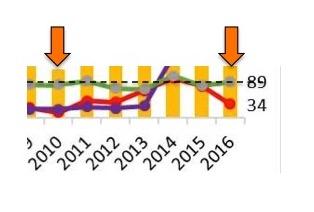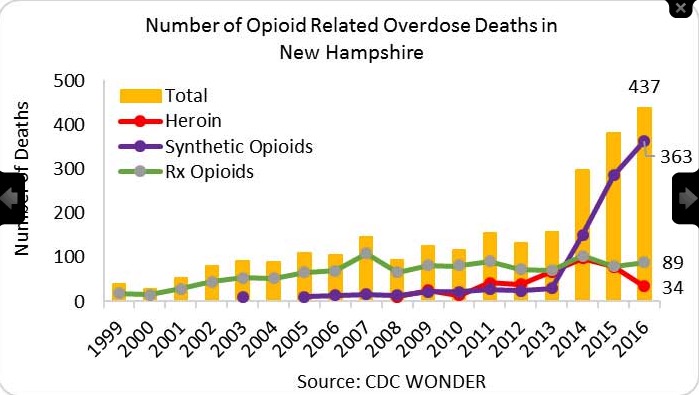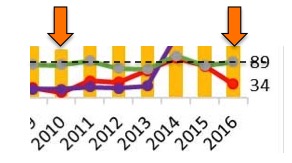
It's more than a little ironic that the state motto for New Hampshire is:
"Live Free or Die"
Because it conflicts with a new motto I have just made up. Since we are nothing if not economical here at ACSH I figured that I could save time and energy coming up with new mottos for the CDC and DEA. But I only need one:
"Feel Free To Lie"
I've been writing all along (most recently Who Is Telling The Truth About Prescription Opioid Deaths? DEA? CDC? Neither?) about how the CDC and their flunkies from the Physicians Responsible for Opioid Prohibition (1) have been spinning their bogus statistics in order to tell us a story that isn't even remotely true: That prescription opioids are killing bazillions of Americans and the way to combat this is to crack down on prescribing these drugs.
My article above catches the DEA making up the same crap - 164 pages worth of it. Somehow, despite both common sense and plenty of evidence to the contrary, the agency fell into line with the CDC and reached a similar conclusion. The graphs in the article do a pretty good job of showing you why these conclusions are nonsense.
But not as good as this one:

Source: CDC "Synthetic Opioids" means illicit fentanyl and its analogs. (2)
Well, I'll be damned! Those numbers sure look strange. Why, if you happened to come across this graph without a calculator how could you possibly know that:
- Fentanyl was involved 83% of the overdose deaths in New Hampshire
- Heroin was in 8% of the overdose deaths in New Hampshire
- You can figure out the rest.
Of course, different states will have different patterns of abuse, but if 9% of OD deaths in one state came from opioid analgesic drugs like Vicodin and Percocet then it's a pretty good bet that most of the time you're going to see a pattern that is at least vaguely similar to that of New Hampshire, despite the fact that it has (by far) has the lowest percentage of opioid analgesic OD deaths in the country. You see this in the Northeast. The majority of OD deaths are not from pills.
- New Jersey - 30%
- Connecticut - 31%
- New Jersey - 30%
- New York - 27%
- Massachusetts - 19%
The next set of numbers is especially interesting. The Midwest is constantly described in the news as "being ravaged by the opioid crisis." This is true, but most of the ravaging isn't coming from prescription pills.
- Kentucky - 43%
- Ohio - 24%
- West Virginia - 46%
- Indiana - 37%
In 19 states the percentage of deaths from pills exceeds 50% of the total. Some examples:
- Maine - 51%
- South Carolina - 61%
- Alaska - 54%
- Arkansas - 78%
- California - 58%
- Georgia - 58%
What is more interesting, however, is the slope of the (green) line between 2010 and 2016 - the time when these pill deaths supposedly skyrocketed. Here's a close-up of New Hampshire. It is quite obvious that the number of deaths between 2010 and 2016 remained more or less constant.

New Hampshire opioid deaths 2010-2016. The green line represents prescription opioid analgesics. The black hatch line connects 2010 with 2016. It is quite level.
The same held true for other states with a low percentage of pill deaths. The black hatch line shows that pill deaths between 2010-2016 were fairly constant in these states.
But the same also held true for the states with a high percentage of pill deaths (South Carolina being the exception).
So, here's the obvious question:
So, where is the opioid epidemic?
Between 2010-2016, the years when everyone became hysterical about "heroin pills" there was just about no change in the number of deaths in states where pill death rates were low or where they were high. The answer is obvious. The "opioid epidemic" is due to heroin and fentanyl, not pills. As I've written before, we are not having an "opioid epidemic." We are having a fentanyl epidemic. It's been obvious all along. Yet, we keep hearing the same old garbage from our government and the press and the only "plan" our "leaders" have is to tighten up the pills.
Like this:
"Controlled Prescription Drugs (CPDs) ... are still responsible for the most drug-involved overdose deaths and are the second most commonly abused substance in the United States."
DEA Report, November 8, 2018.
Maybe they're just high.
Or, in some cases, quite low.
NOTES:
(1) I may have gotten the name wrong. But those guys don't care much for accuracy, so big deal.
(2) For some reason, tramadol is classified a synthetic opioid but it has little in common with real opioids. (It has also been called a pseudo-opioid.) I don't think it should be called an opioid at all. It is far weaker and bears little structural resemblance to either the semi-synthetics (oxycodone, hydrocodone) or the fentanyls. So, it hits a few receptors. Big deal. So do other drugs that aren't opioids either.



